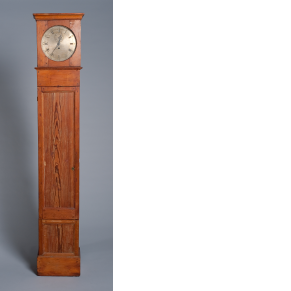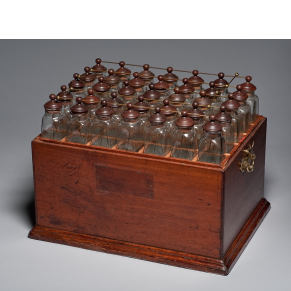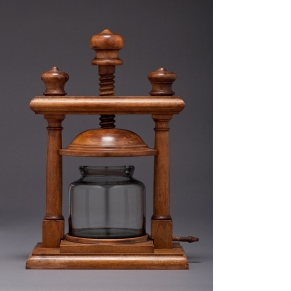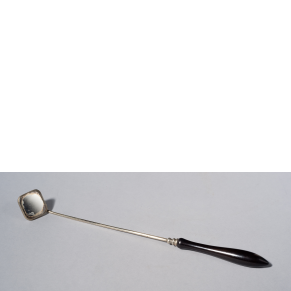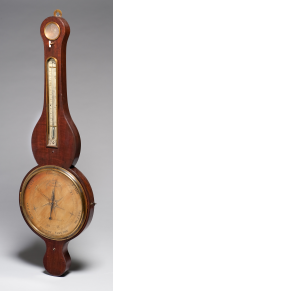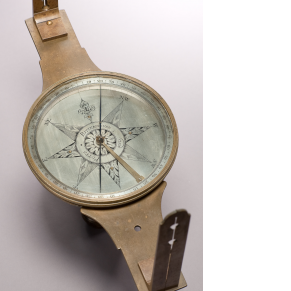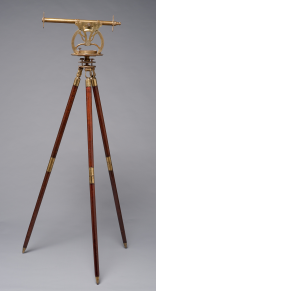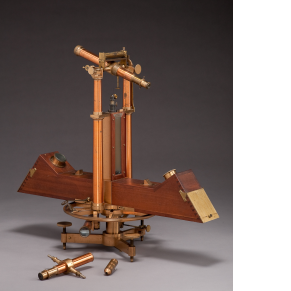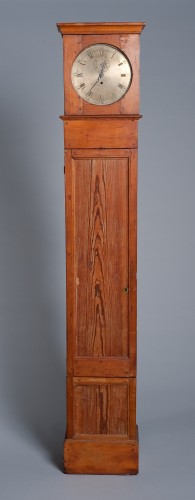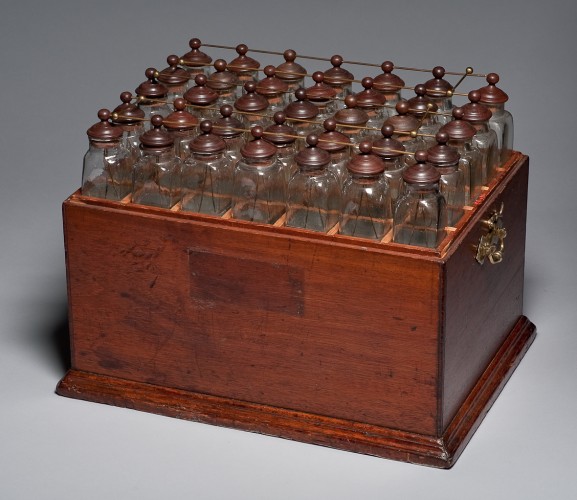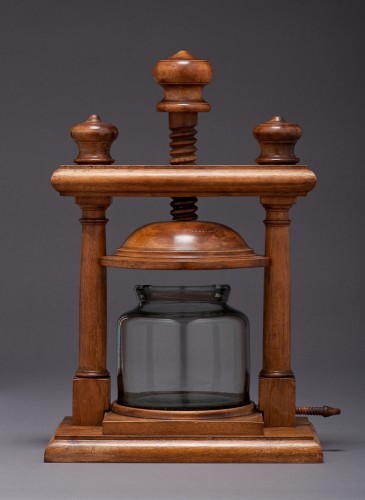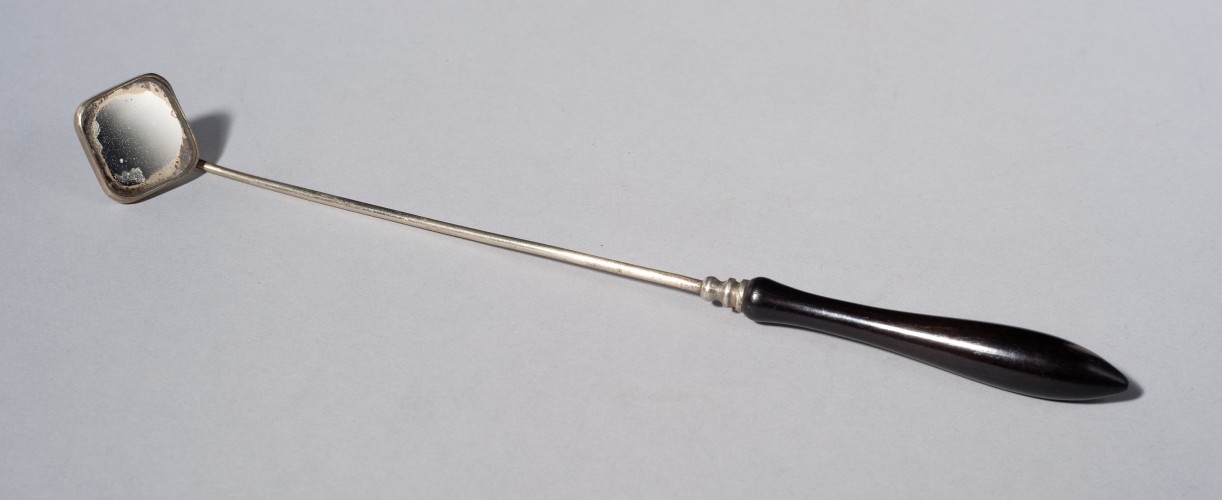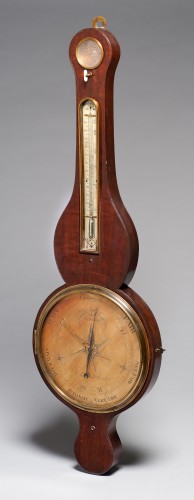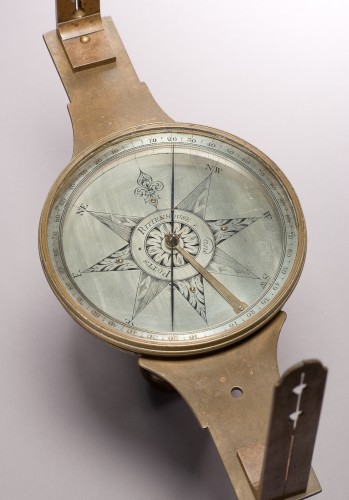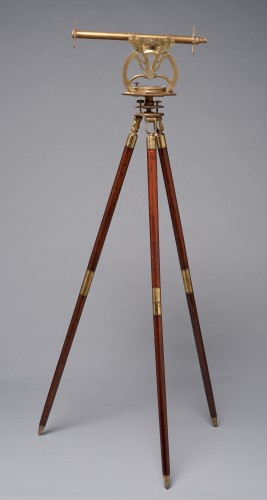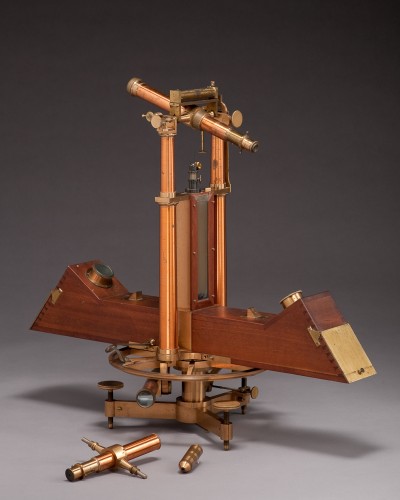This exhibition is made possible in part by the National Institutes of Health.
From the Laboratory to the Parlor: Scientific Instruments in Philadelphia, 1750-1875
From the Laboratory to the Parlor: Scientific Instruments in Philadelphia, 1750–1875 explored the significance of scientific instruments in the development of the American colonies and the early republic, with a specific focus on Philadelphia. Through the display of instruments such as David Rittenhouse’s home-made astronomical clock, a battery of Leyden jars to store electrical charges, a disinfecting apparatus used to clear ships and sickrooms of dreaded illness, Emma Seiler’s laryngoscope and more—together with period books, catalogues, engravings, maps, portraits and even translations of American Indian languages—the exhibit illuminated the role that science played in the drive to create a European-style America, develop local and international commerce, and establish social as well as intellectual prestige for the New World devotees of what was then known as “natural philosophy.”
Divided into five major themes—Standardization; Mapping (Land, Sea and Sky); Parlor Instruments; Electricity and Medicine; and Representation and Portraiture—From the Laboratory to the Parlor chronicled the many fascinating stories these instruments and artifacts tell. The exhibit also traced momentous events of the time, such as the yellow fever epidemic that killed more than 5000 Philadelphians in the summer of 1793.
A unique display of objects largely unknown to today’s public, From the Laboratory to the Parlor not only illuminated the culture of science in colonial, post-colonial and mid-19th century Philadelphia, but visibly demonstrated the connection—and the process of growth between then and now—through such themes as the interdependence of marketing, commerce and technology; politics and technology; the exchange of ideas and information that led to experimentation, invention and progress; and more.

